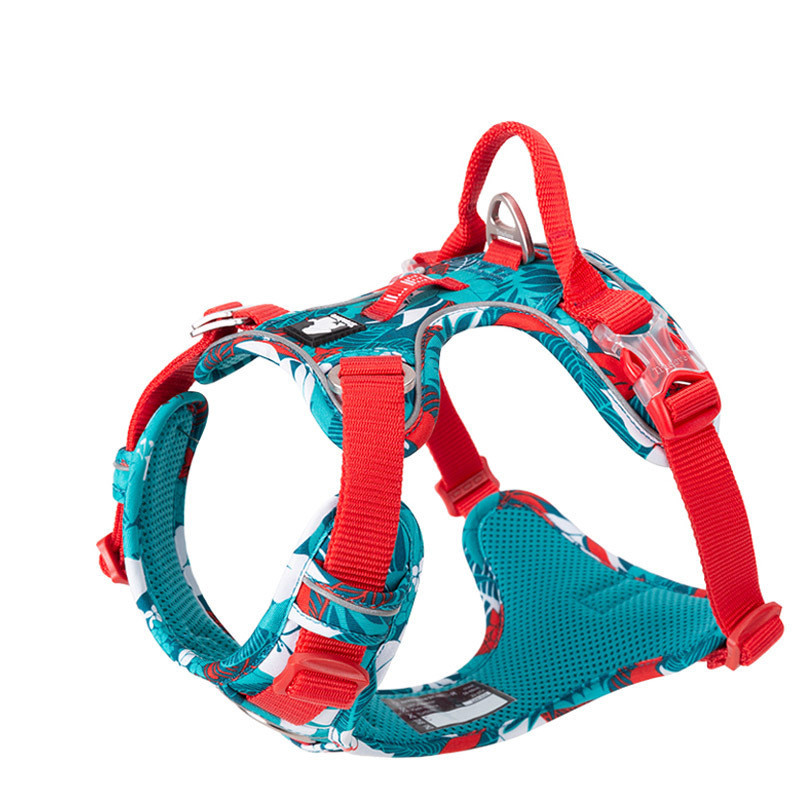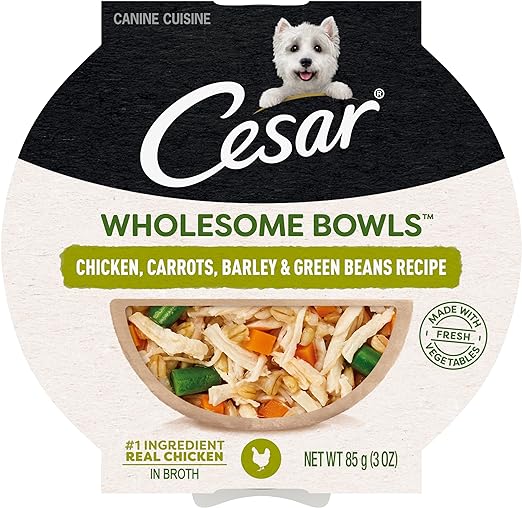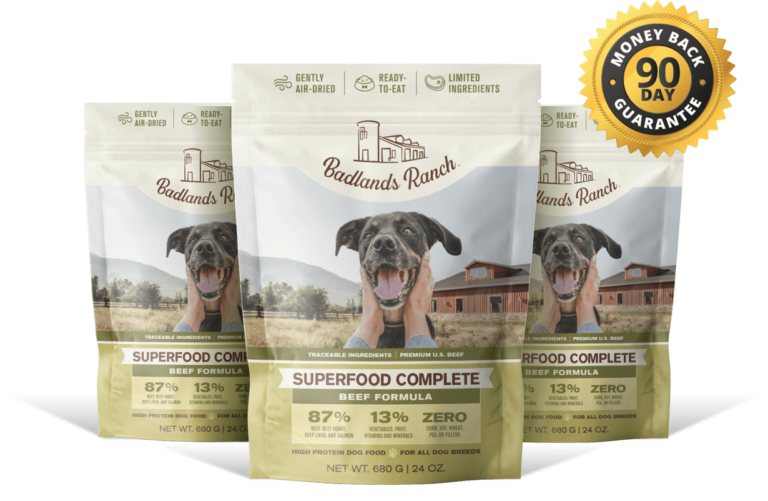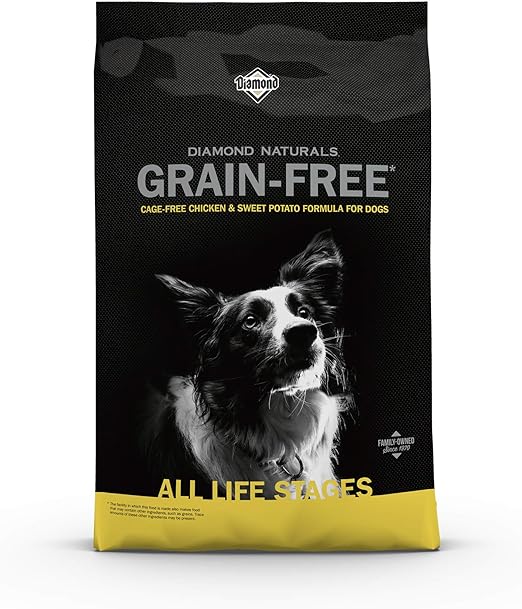Finding the right dog harness for your pooch is like buying a pair of jeans – you gotta make sure they fit well! A proper fit keeps Fido comfortable while letting him move freely on walks or hikes. In this article, we’ll dish all the deets on measuring your mutt, the types of harnesses available, and what features to look for. Spoiler: custom sizing and padded straps are clutch. We want your furkid feeling fine, not confined! So read on for tips to find the perfect fit for your four-legged friend!
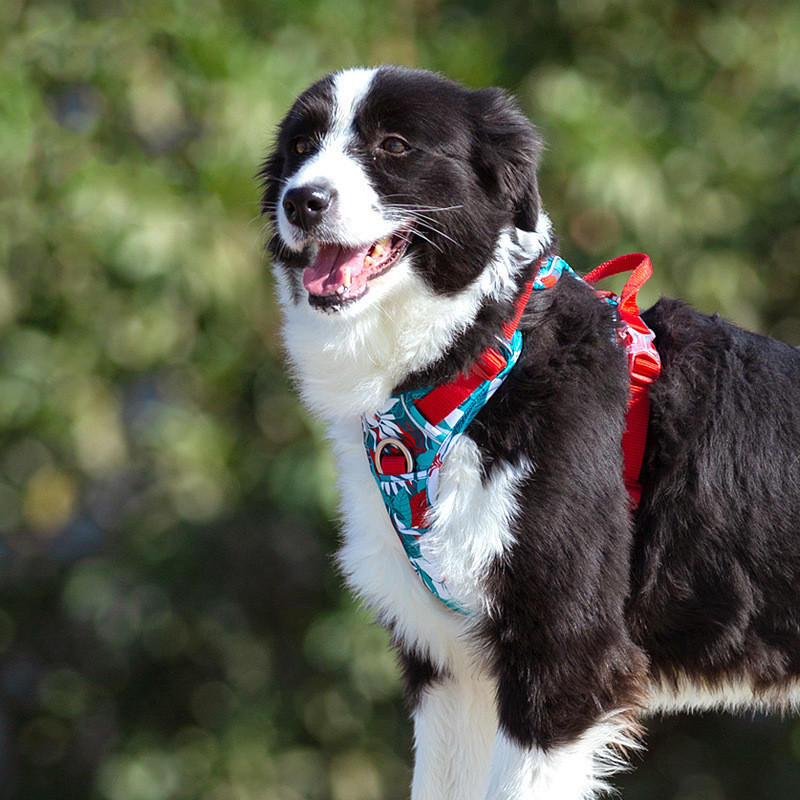
Why Use a Dog Harness Over a Collar
As a dog owner, you want to keep your furry friend comfortable and safe on walks. A dog harness is a much better option than a standard collar for many reasons.
A harness distributes pressure over a larger area of your dog’s body, reducing strain on the neck. This is especially important for puppies or small breed dogs. Collars can often cause coughing, choke the dog, or even lead to long term damage of the trachea. Harnesses are a safer, more humane choice.
Harnesses also provide you with more control over your dog. They discourage pulling since pressure is distributed across the chest and shoulders. This can make training your dog to walk calmly on leash much easier. Harnesses that attach in the front, called “no-pull” harnesses, are very effective for this purpose.
Another benefit of harnesses is that they are more escape-proof than collars. If your dog tends to back out of their collar, a harness will give you peace of mind that they can’t wiggle free. Harnesses also won’t put strain on your dog’s neck if they do lunge or jump.
Types of Harnesses
There are a few main types of harnesses to choose from:
- Back-attaching: Basic but comfortable, attaches at the back between the shoulders. Good for small or casual walks.
- Front-attaching: Discourages pulling, attaches at the chest. Great for training.
- Padded: Provides extra comfort for long walks or outdoor adventures. Ideal for active or long-haired dogs.
- Vest: Full coverage, escape-proof, for dogs that easily slip out of other harnesses.
With so many options available, you can find a harness perfectly suited to your dog’s needs, size, coat, and activity level. Measure your dog and check sizing charts to choose a safe, comfortable, and secure harness for your faithful friend.
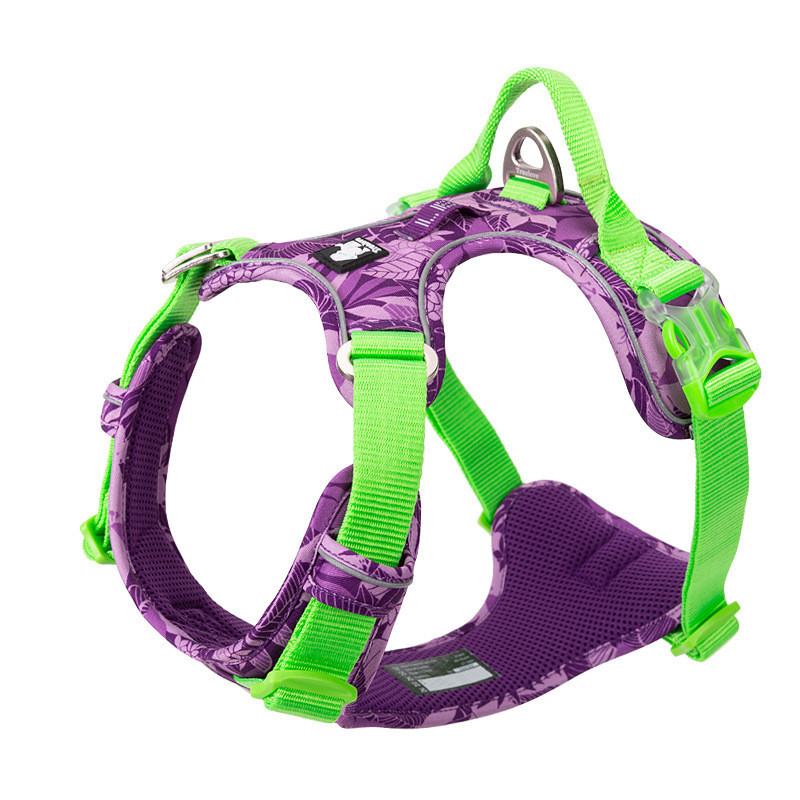
Types of Dog Harnesses: Front Clip, Back Clip, No Pull
When it comes to dog harnesses, there are a few main styles to choose from. The type you select will depend on your dog’s size, temperament, and the activities you enjoy together.
Front Clip Harness
A front clip harness attaches at your dog’s chest and is ideal for dogs that pull on the leash. The front attachment redirects your dog’s energy and makes pulling less rewarding. This can help discourage the behavior over time through consistent use. Front clip harnesses are very popular for training puppies or dogs that are still learning good leash manners.
Back Clip Harness
A back clip harness fastens around your dog’s shoulders and attaches at the back. This style evenly distributes pressure across your dog’s body and can be more comfortable for some dogs. Back clip harnesses are a simple, multi-purpose option that works well for most casual walking and outdoor adventures. They do not discourage pulling as well as front clip harnesses, so may not be the best choice for dogs that frequently pull.
No Pull Harness
As the name suggests, no pull harnesses are designed specifically to curb pulling. They often have extra straps that attach at multiple points, including the dog’s chest, shoulders, and back. When your dog pulls, the harness tightens slightly to discourage the behavior. No pull harnesses can be very effective, especially when used consistently during training. However, some dogs may find certain styles uncomfortable, so you may need to try different options to find the right fit for your dog.
With so many high-quality, dog-friendly harnesses available, there’s sure to be one that suits your needs. Take your dog’s measurements, consider his temperament and your typical activities together, and you’ll be well on your way to finding the perfect harness for your furry adventure buddy.

How to Measure Your Dog for a Proper Harness Fit
To find a harness that fits your dog perfectly, you’ll need to take some measurements. Grab a flexible tape measure and have some treats on hand to keep your dog still.
First, measure around your dog’s neck. Place the tape measure over the most prominent part of the neck, typically just behind the ears. Make sure the tape measure is level for the most accurate measurement. Write down this number – it will determine the neck size you need.
Next, measure the chest. Have your dog stand with their front legs slightly apart. Place one end of the tape measure behind the front legs at the narrowest part of the chest. Bring the tape up and around the rib cage, measuring at the widest point of the chest, just behind the front legs. Note this measurement as well.
Finally, measure the length. Start at the base of the neck where a collar would sit and measure to the base of the tail. Be sure to follow the curve of the spine. This length measurement, combined with the neck and chest size, will help determine if you need a small, medium or large harness.
Once you have the measurements, use the sizing chart provided on the product listing or packaging to determine which size will suit your dog best. It’s always a good idea to compare your dog’s measurements to the high end of the recommended size range to ensure the harness won’t be too snug. Some brands may size differently, so double check the dimensions.
For maximum comfort and safety, the harness should fit snug but still allow for two fingers of slack on each strap. Make sure all straps and buckles are securely fastened but not too tight. The harness should not dig into or chafe your dog in any way. With the proper fit and adjustments, a harness can keep your dog secure and content during your adventures together.
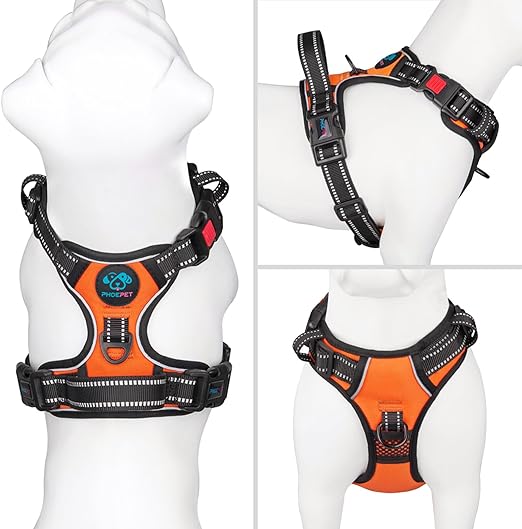
Features to Look for in a Quality Dog Harness
When choosing a dog harness, there are several important features to consider for your dog’s comfort and security.
Adjustability
A harness that can be adjusted to properly fit your dog is key. Look for adjustable straps on both the chest and belly sections so you can tighten or loosen as needed. The harness should be snug but still allow for a full range of motion. Straps that are too loose can allow your dog to wiggle out, while straps that are too tight can cause discomfort.
Durability
A high-quality, durable harness will last for years. Look for harnesses made of weather-resistant, breathable materials like nylon. Straps reinforced with double stitching, strong Velcro closures or metal clasps will hold up better over time. For larger or stronger dogs, consider a harness designed specifically for “working” or service animals.
Reflective details
Reflective strips, piping or stitching on the harness will make your dog more visible to others in low light conditions. This is especially important if you walk or hike with your dog in the early morning, evening or at night. Reflective accents will help ensure your dog’s safety in any situation.
Easy to put on and take off
A harness that is difficult to put on or take off will just frustrate you both. Look for a design with wide neck and chest openings, quick-release buckles or strong Velcro closures. The easier a harness is to put on and off, the more likely you’ll use it for your adventures together.
Choosing a dog harness with these key features will ensure maximum comfort, security and durability for your faithful friend. With the right harness, you’ll both be ready to enjoy everything the great outdoors has to offer.
Frequently Asked Questions About Dog Harnesses
When choosing a harness for your dog, you likely have some questions. Here are some of the most common FAQs to help you find the perfect fit.
What are the benefits of a harness versus a collar?
A harness is gentler on your dog’s neck and back. It distributes pressure over a larger area, reducing strain. Harnesses also provide more control over your dog’s movements, making walks easier and safer for both of you.
What types of harnesses are there?
There are several styles to choose from:
- Back-clip harnesses: Simple but effective. The leash attaches at the back, between the shoulder blades. Good for small dogs.
- Front-clip harnesses: The leash attaches at the chest, which helps reduce pulling. Can be useful for training.
- Head halters: Fit over the muzzle and head, providing strong control. Require proper introduction. Best for medium to large dogs.
- Vest harnesses: Provide maximum coverage and distribute pressure. Often used for service dogs. Require precise fitting.
- Seat belt harnesses: Designed to securely restrain dogs in vehicles. Attach to car safety belts. Important for safe travel.
How do I measure and fit a harness?
You’ll need a flexible tape measure. Measure around the base of the neck, chest, and waist. Refer to the sizing chart for the specific harness you choose. For the best fit:
- The harness should be snug but still comfortable when you can slide two fingers under it.
- All straps should lie flat without twisting.
- Your dog should have free range of motion for walking, sitting, and lying down.
With the proper size and fit, a dog harness can be a comfortable and safe way for you and your pup to enjoy the great outdoors together! Let me know if you have any other questions.
Conclusion
So there you have it fellow dog parents – selecting the right harness for your pup is vital for both comfort and control. By understanding the options and properly measuring your dog, you can find the perfect solution to keep them safe and happy on your adventures together. And remember – no walk is complete without tons of praise, pets, and play for your furry best friend along the way! Treating them with compassion builds an unbreakable bond that will bring you both joy for years to come. Now go explore the world as a dynamic duo!

